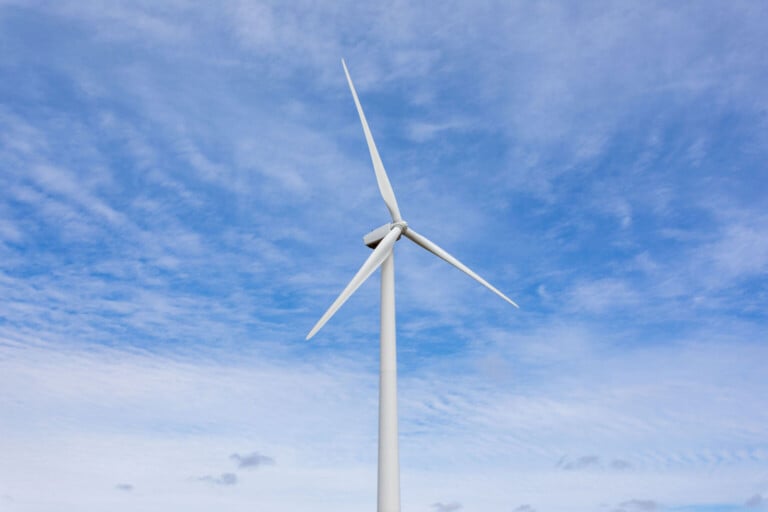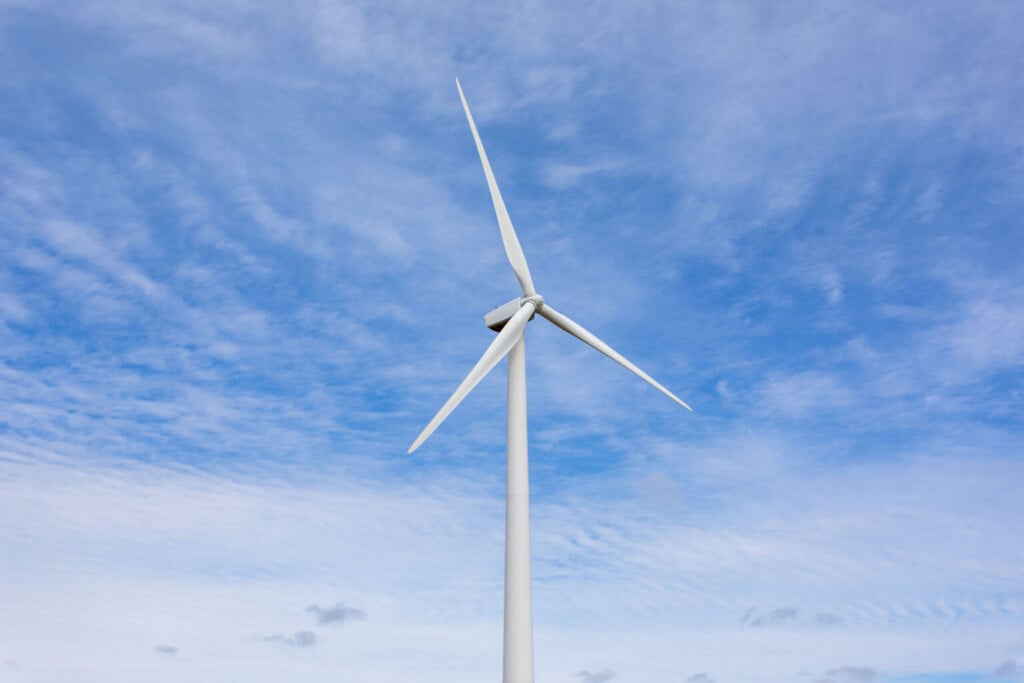Battery storage developer addresses risks, grid benefits of North Dakota project

BISMARCK, N.D. (North Dakota Monitor) — Emmons County residents had mixed but mostly positive opinions Thursday about a project that would be North Dakota’s first-ever battery storage site.
NextEra, the company overseeing the project, is looking to build an estimated $181 million to $191 million Battery Energy Storage System project that would use massive batteries to harbor wind energy when it’s produced in excess — on days when wind harnessed by turbines exceed demand for electricity. Utility regulators will decide whether to give the proposal the final green light.
The batteries would be stored on 24 acres of an existing wind farm operated by NextEra. Storage sites are typically empty fields peppered with rows of massive, highly-secure battery units similar in size to shipping containers.
Similar projects have been popping up across the country as a way to smooth out grid congestion tied to energy sources variable generation. The technology receives production tax incentives from the federal government.
During a Public Service Commission hearing in Emmons County on Thursday, NextEra told utility regulators the storage site would have minimal adverse impacts on the area. Approximately two dozen people were in the audience.
Michael Bettis, a fire safety engineer for NextEra, said the major potential safety threats when it comes to Battery Energy Storage Systems are called “thermal runaway events.”
Such events occur when a small portion of a battery unit fails and captures more heat than it can dissipate, Bettis said. Sometimes this occurs when water leaks into a unit; other times it’s caused by general internal system failure.
Thermal events can result in fire, but they begin by expelling hydrogen, carbon dioxide and carbon monoxide into the atmosphere, according to Bettis. Part of the safety response plan involves training local firefighters to let a fire burn within the storage site area because it consumes the hydrogen and the carbon compounds.
Bettis said of NextEra’s 50 battery storage sites in the United States, there have been few thermal runaway events — none of which resulted in environmental contamination.
He also pointed to the project application, which outlines the constant on-site monitoring and procedures in place if a thermal event were to occur. NextEra later told the commission it’s been in contact with local first responders to establish a safety plan.
The company also vowed to craft a plan for decommissioning the batteries and to provide associated financial insurance.
Public Service Commission Chair Randy Christmann previously raised concerns about the site using batteries made in “adversarial” countries, like China. But NextEra told commissioners Thursday the company has since decided to use lithium-ion batteries sourced in the United States.
NextEra Environmental Specialist Dustin Wernicke said further impacts to the environment, such as air, water, soil and noise pollution, are minimal. He also said the company has consulted with some tribal representatives about possible discovery of cultural resources during construction.
Around 150 construction and one to three permanent jobs would be tied to the project, the company estimates, and the county is estimated to reel in $7.2 million in property taxes over its 25-year lifespan.
After more than three hours of discussion with NextEra, commissioners heard testimony from a handful of area residents who had varying opinions on the project.
Sen. Jeff Magrum, R-Hazelton, asked the commission to hold off on issuing a permit until the Legislature has time to design guardrails and a specified tax structure for the new technology. Magrum’s district is in Emmons county.
He said the Legislature was “left out” of the process, and too much responsibility was placed on the county during the outset.
Pete Silbernagel, a former state lawmaker who owns a cabin near the proposed site, disagreed with Magrum’s idea of bringing the Legislature into the approval process and said the benefits to securing the grid outweigh the potential safety risks.
“You’re all well aware of the growing, increasing demand of electricity in this nation,” he said. “I really appreciate the fact that North Dakota has an all-of-the-above approach. I think this project can significantly help provide the energy that we’re going to need in the future.”
North Dakota Transmission Authority Director Claire Vigesaa told the Monitor he supports the new technology and its ability to stabilize the grid, a sentiment shared by other residents as well as the Dakota Resource Council, an environmental advocacy group.
“If executed in a manner that does not infringe on the rights and safety of the local community while bringing meaningful benefits to that community, this and future projects should be a good addition to the regional grid,” Mike Graalum of the Dakota Resource Council said in a statement.
Emmons County has already approved the permits necessary to start construction. The project now awaits approval from the Public Service Commission.
According to Director of Utilities for the Public Service Commission Victor Schock, the decision will likely come in the next month or two, depending on how long it takes the company to provide information requested by the commission.
If approved, construction is slated to begin May 2026 and be completed by December that year.
NextEra is proposing a similar battery storage project on the other side of the state, in Burke County. The hearing for that project is scheduled for 10 a.m. Dec. 19 at the Bowbells Memorial City Hall.
(Story written by Peyton Haug – North Dakota Monitor)






